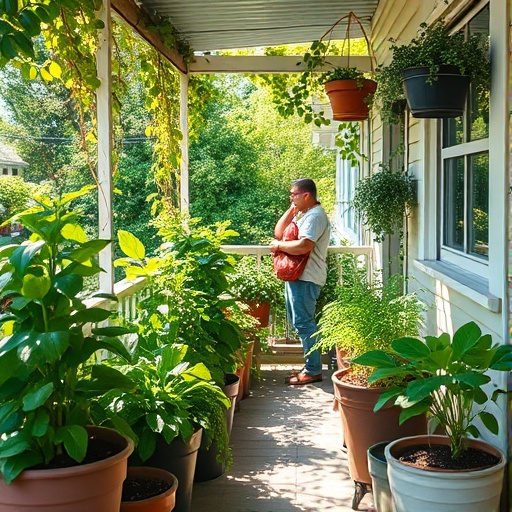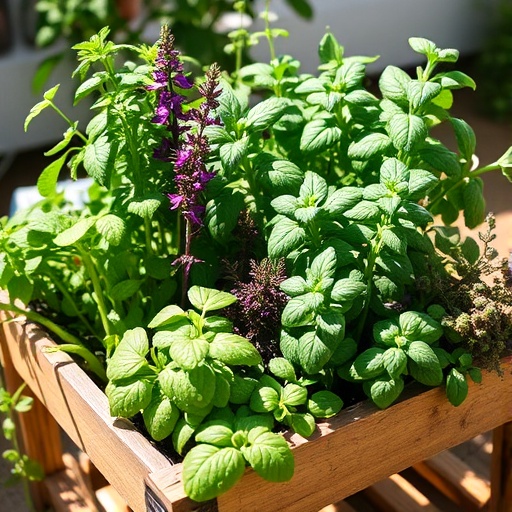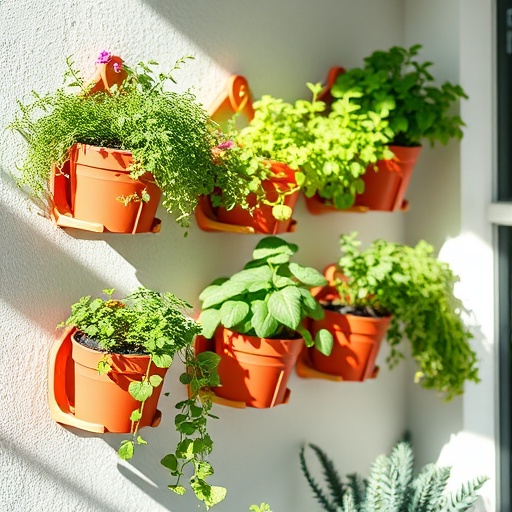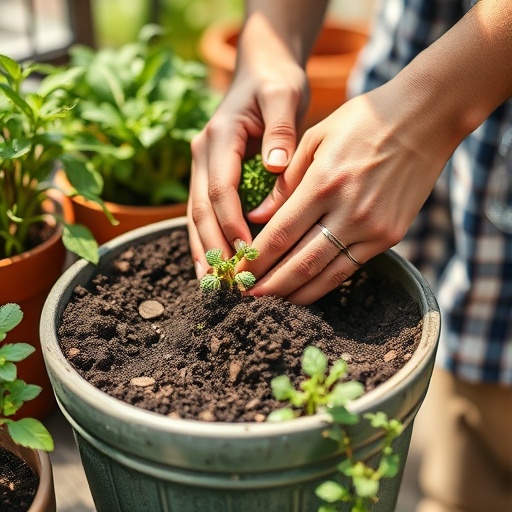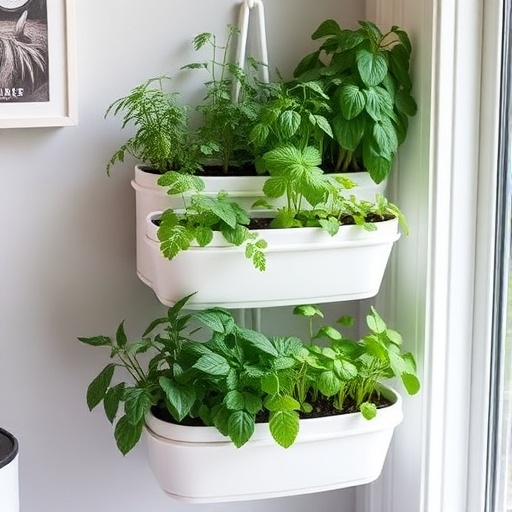Introduction
Have you ever gazed longingly at vibrant herb gardens, only to sigh at your perpetually shaded balcony or dimly lit kitchen windowsill? Many aspiring gardeners believe that a bounty of sun is non-negotiable for cultivating aromatic herbs. However, what if I told you that you could nurture a thriving collection of beautiful, fragrant, and flavorful herbs even with limited light? It’s true! Discovering the best indoor plants with low light tolerance, specifically herbs, can transform your shaded spaces into flourishing culinary havens. This comprehensive guide will illuminate the path to a successful herb garden, proving that a little shade doesn’t have to dim your gardening dreams. We’ll explore resilient herbs that thrive in less-than-sunny conditions, offering practical advice and expert insights to ensure your indoor plants with low light thrive.
Tools & Materials Needed
Embarking on your shade-loving herb journey requires a thoughtful selection of tools and materials to ensure success without unnecessary expense or environmental impact. Here’s what you’ll need:
- Pots with Drainage Holes: Essential for preventing root rot. Consider terracotta for breathability or recycled plastic containers for an eco-friendly and budget-friendly option. A quick tip: upcycled food containers (like yogurt tubs or large coffee cans) can be excellent after thorough cleaning and drilling drainage holes.
- Quality Potting Mix: A well-draining, nutrient-rich potting mix is crucial. Look for organic options. Avoid dense garden soil, which can compact and suffocate roots indoors. A good mix typically includes peat moss, perlite, and compost.
- Herb Seeds or Starter Plants: For beginners, starter plants often yield quicker results and boost confidence. If starting from seed, ensure they are fresh for better germination rates.
- Small Gardening Trowel or Scoop: For handling soil and transplanting. A repurposed kitchen spoon can work in a pinch!
- Watering Can with a Fine Spout: Allows for gentle, controlled watering, preventing soil displacement and overwatering, which is particularly important for indoor plants with low light.
- Pruning Shears or Scissors: For harvesting and shaping your herbs. Clean, sharp blades prevent damage to the plants.
- Labels (Optional but Recommended): To keep track of your different herb varieties, especially if you’re growing several. Craft sticks or even painted rocks make charming labels.
- Grow Lights (Optional for very low light): If your space truly struggles with natural light, a small LED grow light can make a significant difference. Look for full-spectrum lights designed for seedlings or indoor growing. Eco-friendly alternative: strategically placing your plants to maximize any available indirect light throughout the day.
Time & Effort Overview
Cultivating shade-loving herbs might seem daunting, but it’s remarkably rewarding and often less time-intensive than full-sun gardening.
- Initial Setup (Planting/Potting): Varies from 15 minutes per plant (for starters) to 1-2 hours for starting multiple varieties from seed.
- Germination (from seed): Typically 7-21 days, depending on the herb. Patience is key!
- Regular Maintenance (Watering, Pruning): Approximately 5-10 minutes a few times a week. This is an ongoing commitment but generally quite relaxing.
- Harvesting: As needed, usually starting a few weeks after planting or a couple of months from seed, offering immediate gratification.
Compared to high-maintenance flowering plants or demanding vegetables, herbs that thrive as indoor plants with low light are generally considered beginner to intermediate in difficulty. Their resilience to lower light conditions often means a more forgiving growing experience. The biggest challenge often lies in avoiding common pitfalls like overwatering, which we’ll cover in detail.
Soil Preparation and Potting Your Herbs
First things first: healthy roots mean healthy herbs! Start by selecting pots with excellent drainage. Fill your pots about two-thirds full with your quality potting mix. If using starter plants, gently loosen the roots before placing the plant in the pot, ensuring the top of the root ball is level with the soil surface. For seeds, follow package instructions for planting depth and spacing. Lightly firm the soil around the plant or over the seeds. You’ve got this!
Initial Watering and Light Placement
After potting, give your herbs a good, gentle watering until you see water draining from the bottom (but don’t let them sit in standing water!). This helps settle the soil and kickstarts growth. Now, for their new home: place your potted herbs in an area that receives bright, indirect light. Think north-facing windows for cooler climates, or a spot several feet away from a south- or west-facing window. Avoid direct, harsh sunlight for these shade-lovers, as it can scorch their leaves. Remember, even indoor plants with low light needs still appreciate some light!
Consistent Watering Practices
This is where many beginners stumble. The key to successful watering for indoor plants with low light is consistency, not frequency. Feel the top inch of the soil; if it’s dry, it’s time to water. If it’s still damp, wait. Overwatering is a leading cause of demise for shade-loving herbs, as roots can rot without proper aeration. For example, Basil prefers consistently moist soil, while Rosemary is more drought-tolerant. Adjust your schedule based on the specific herb and humidity levels in your home.
Pruning for Bushier Growth and More Yield
Don’t be shy with your scissors! Regular pruning encourages your herbs to grow bushier and produce more leaves, rather than becoming leggy. When harvesting, pinch or snip off the top few sets of leaves, just above a leaf node. This stimulates new growth from the node, leading to a fuller plant. For optimal flavour, it’s often recommended to harvest before the plant flowers. This simple act of propagation can significantly increase your yield!
Fertilizing and Pest Prevention
Shade-tolerant herbs still benefit from occasional feeding. A balanced liquid fertilizer, diluted to half strength, applied every 4-6 weeks during the growing season (spring and summer) is usually sufficient. Over-fertilizing can harm your plants. As for pests, indoor plants with low light can still attract them. Inspect your plants regularly for any signs of trouble like sticky residue or tiny bugs. A gentle spray of neem oil solution or insecticidal soap can effectively deter common pests like aphids or spider mites. Early detection is your best defense!
Growth & Care Tips
Understanding the nuances of growth and care is paramount for nurturing healthy, productive indoor plants with low light.
- Watering Frequency: As mentioned, water when the top inch of soil feels dry. On average, this might be 1-2 times a week, but always check the soil first. Err on the side of underwatering rather than overwatering, especially in cooler, less sunny environments. Scientific data suggests that 70% of indoor plant failures are due to improper watering.
- Sunlight Exposure: While these herbs tolerate shade, they still need light. Aim for 4-6 hours of bright, indirect light daily. If natural light is extremely limited, consider supplementing with a compact LED grow light for 10-12 hours a day. Positioning your plants can make a huge difference; even moving a pot a few feet can alter light intensity significantly.
- Pruning: Beyond harvesting, prune any yellowing or dead leaves to redirect plant energy to healthy growth. Regularly “haircut” your herbs to maintain shape and encourage new foliage.
- Fertilization: Use a balanced, organic liquid fertilizer at half the recommended strength during peak growing months (spring and summer). Herbs are not heavy feeders. Over-fertilization can lead to leggy growth and chemical burn.
- Pest Prevention: Good air circulation helps prevent fungal issues and some pests. Keep an eye out for common indoor pests like spider mites or gnats. For gnats, the problem is often overwatering; let the soil dry out more between waterings. A simple spray of soapy water often deters most soft-bodied insects.
Eco-Friendly & Sustainable Alternatives
Gardening responsibly enriches not just our homes, but also our planet.
- Composting: Start a small indoor compost bin for kitchen scraps. The resulting compost can be mixed into your potting soil, providing natural nutrients and reducing waste. Explore methods like vermicomposting for a low-odor solution right in your kitchen.
- Natural Fertilizers: Instead of synthetic options, use compost tea, diluted worm castings, or even diluted coffee grounds (for acid-loving plants). Eggshells can provide calcium when crushed and added to the soil.
- Water Conservation: Collect rainwater if feasible, or reuse water from washing vegetables (as long as it’s free of grease or harsh soaps). A self-watering pot system can also reduce water waste. You can find more tips on water conservation here: How to Water Balcony Herbs Without Overwatering.
- Alternatives for Small Spaces:
- Balcony Gardens: Even partially shaded balconies can be perfect for these herbs. Check out these ideas for DIY Balcony Herb Garden With Recycled Containers and Vertical Balcony Herb Garden Design Ideas.
- Pots: Mix and match sizes and textures for visual interest – always prioritize drainage.
- Vertical Gardens: Wall-mounted planters or tiered shelving units are excellent for maximizing space, allowing you to grow numerous indoor plants with low light requirements.
Creative Ideas & Uses
Integrating your shade-loving herbs into your home goes beyond just cooking – they can be a stylish addition too!
- Decorate with Plants: Arrange your potted herbs in groupings of varying heights and textures on a windowsill, bookshelf, or side table. Herbs like Parsley or Mint offer lush greenery that can soften an area. Consider unique planters – ceramic, copper, or even upcycled vintage tins can elevate the aesthetic.
- Repurpose Garden Materials: Old wooden crates can be transformed into rustic plant stands. Mason jars make charming minimalist planters for single herb sprigs. Even a forgotten ladder can become a multi-tiered display for your indoor plants with low light.
- Combine Plants Aesthetically: Pair your herbs with other low-light-tolerant houseplants like Pothos or Spider Plants for a diverse and vibrant indoor jungle. The varied leaf shapes and colors create a visually appealing arrangement. For design ideas and inspiration, a good place to explore is Pinterest, like this board: Herbs That Grow Well in Shade.
- Culinary & Home Uses:
- Fresh Culinary Delights: Of course, the primary use! Imagine snipping fresh Mint for your tea, Chives for scrambled eggs, or Parsley for a garnish.
- Infused Oils & Vinegars: Preserve your herb harvests by infusing them in olive oil or vinegar for delicious dressings and cooking enhancers.
- Herbal Teas: Many shade-loving herbs, like Mint and Lemon Balm, make refreshing and calming herbal teas.
- Aromatherapy: The natural scents of herbs like Mint and Lemon Balm can subtly freshen your indoor air.
Common Mistakes to Avoid
Even experienced gardeners make mistakes, but knowing what to watch out for can save your beloved indoor plants with low light:
- Overwatering: As highlighted, this is the number one killer. Roots need oxygen. Saturated soil starves them. Expert reasoning: Constant wetness promotes root rot, a fungal disease that rapidly destroys the root system, preventing water and nutrient uptake. Always check soil moisture before watering.
- Insufficient Drainage: Pots without drainage holes are a death trap. Even a layer of pebbles at the bottom is not a substitute for proper drainage. Data point: Studies show plants in pots without drainage have a significantly higher mortality rate due to waterlogged soil.
- Too Little Light: While they tolerate shade, “low light” doesn’t mean “no light.” Completely dark corners will lead to leggy, pale plants. Expert tip: Look for signs like stretching stems reaching for light, smaller leaves, or very pale foliage. Rotate your plants weekly to ensure even light exposure.
- Neglecting Pruning: Avoiding pruning leads to sparse, unproductive plants. Reasoning: Regular harvesting and shaping stimulate lateral growth, making the plant bushier and more resilient, and ultimately increasing yield.
- Forgetting to Acclimate: If bringing outdoor plants indoors or vice-versa, do it gradually. A sudden change in light, temperature, or humidity can shock the plant. Data: Plants moved too quickly often drop leaves or experience stunted growth for weeks.
Maintenance & Storage Tips
Long-term success with your beautiful indoor plants with low light involves consistent maintenance and smart storage solutions.
- Long-Term Plant Health:
- Repotting: As your herbs grow, they may become root-bound. Look for roots circling the bottom of the pot or emerging from drainage holes. Repot into a slightly larger container (1-2 inches wider) with fresh potting mix every 1-2 years.
- Rotate Regularly: Even in indirect light, one side of the plant might receive more light. Rotate your pots every week or two to encourage even growth and prevent them from leaning.
- Dusting Leaves: Dust can block light and hinder photosynthesis. Gently wipe broad leaves with a damp cloth periodically.
- Seed Storage: If you’re saving seeds or buying in bulk, proper storage is key to viability. Store seeds in a cool, dark, dry place in airtight containers. A glass jar in the refrigerator is often ideal. Label them with the date. Most herb seeds retain viability for 1-3 years.
- Seasonal Care:
- Winter: Growth naturally slows down. Reduce watering frequency and suspend fertilization until spring. Ensure they still receive adequate (indirect) light. If indoor air is very dry due to heating, consider a humidifier or pebble tray for increased humidity.
- Summer: This is peak growing season. You might need to water more frequently and can continue with light fertilization. If moving herbs outdoors for the summer, gradually introduce them to their new environment over a week.
- Solutions for Common Issues:
- Yellow Leaves: Often a sign of overwatering (roots aren’t getting enough oxygen) or a nutrient deficiency. Check soil moisture first. If dry, it might be nutrient related.
- Poor Soil Drainage: If water sits on the surface or drains slowly, your potting mix might be too dense. Amending with perlite or coarse sand can improve drainage. Ensure your pot has adequate drainage holes.
Conclusion
Who knew that a seemingly humble, shaded corner could become a vibrant hub of culinary delight? By understanding the unique needs of indoor plants with low light, especially herbs, you’ve unlocked a whole new dimension of gardening. From the earthy richness of Parsley to the invigorating scent of Mint, and the subtle notes of Chives, an accessible world of fresh flavors awaits, right within your home.
Embrace the joy of nurturing life and the satisfaction of harvesting your own fresh ingredients. Don’t let limited sunshine deter you; instead, let it inspire your creativity and resourcefulness. So, what are you waiting for? Pick your favorite herb from our list, grab your supplies, and start planting today! Share your progress with us in the comments below – we’d love to see your flourishing indoor herb gardens! What herb are you most excited to grow?
FAQ
Q1: Can all herbs grow as indoor plants with low light?
A1: While many herbs prefer full sun, several varieties like Mint, Parsley, Chives, Lemon Balm, and Cilantro are quite tolerant of low or partial light indoors. It’s about choosing the right indoor plants with low light adaptability.
Q2: How much light is “low light” for indoor herbs?
A2: “Low light” typically means bright, indirect light for 4-6 hours a day. This could be a north-facing window, or several feet away from a south or west-facing window where direct sun doesn’t hit the plant’s leaves.
Q3: What are common signs that my low-light indoor plants aren’t getting enough light?
A3: Your herbs might become leggy (stretching towards light), develop pale or yellow leaves, or have slower-than-usual growth. This indicates they need a brighter spot or supplemental grow lights.
Q4: How often should I water my indoor plants with low light?
A4: The best practice is to check the soil moisture. Water only when the top inch of soil feels dry to the touch. Overwatering is more detrimental to indoor plants with low light than slight underwatering.
You may also enjoy reading:
Q5: Do indoor herbs still need fertilizer in low light conditions?
A5: Yes, but sparingly. During the active growing season (spring and summer), use a diluted liquid fertilizer (half strength) every 4-6 weeks. Reduce or stop fertilizing in winter when growth slows.
Q6: What’s the easiest herb to start with as an indoor plant with low light?
A6: Mint and Chives are often considered the easiest for beginners due to their robust nature and tolerance for varied conditions, including lower light. They’re forgiving and rewarding!
You may also enjoy reading:
Q7: Can I grow herbs hydroponically in low light?
A7: Yes, many herbs can thrive hydroponically indoors, and some hydroponic systems come with integrated grow lights, which can perfectly supplement low natural light, providing ideal conditions for your indoor plants with low light.
